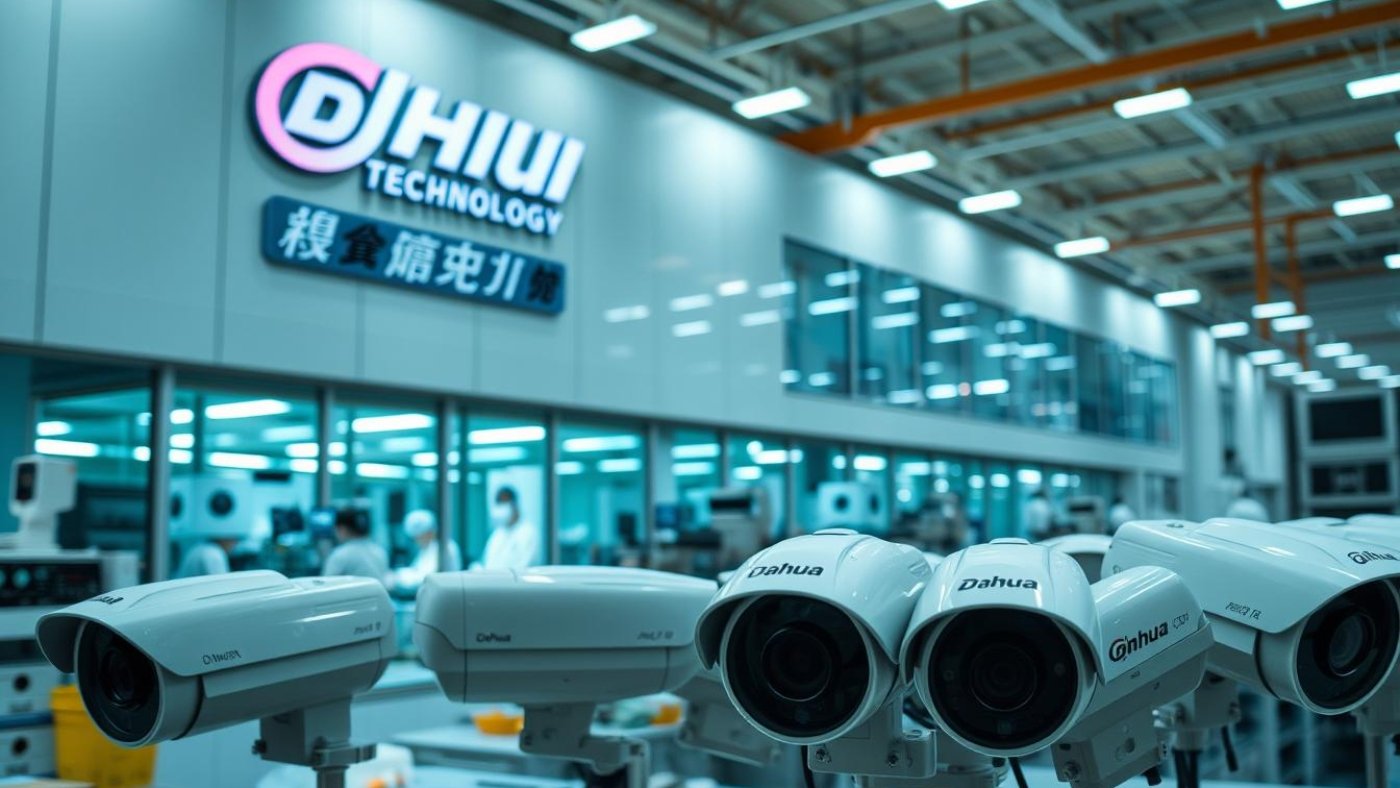In the global market for surveillance equipment and CCTV cameras, Dahua Technology is one of the most recognized brands. The question, “Where are Dahua cameras made?” is frequently asked by buyers, installers, and distributors. A detailed answer requires an explanation of the company’s history, manufacturing locations, component sourcing, and service network. Below is a structured overview to provide a clear picture of the origin of Dahua products.
Dahua: A Brief History and Headquarters
Dahua Technology Co., Ltd. is a Chinese technology company specializing in surveillance equipment, video systems, management software, and smart solutions.
- Headquarters: The company’s headquarters are located in Hangzhou, Zhejiang Province, People’s Republic of China.
- Global Presence: Dahua has experienced significant global growth in recent years, becoming one of the world’s largest manufacturers of CCTV cameras and video equipment.
Manufacturing Locations and Factories
The primary manufacturing of Dahua products takes place in China.
- Primary Production: Most of Dahua’s core manufacturing and assembly plants are located within China, with Hangzhou being a central hub.
- Extended Network: To meet domestic and international demand, Dahua has expanded its production network to include other facilities across China.
- OEM/ODM Partners: Some product lines or components may be sourced or assembled through contract manufacturers (OEM/ODM) within or outside China. Therefore, the “Made in China” label is standard for most Dahua products.
The Manufacturing Process, Components, and Sourcing
The production of CCTV cameras involves design, component sourcing, hardware assembly, software installation, and quality control.
- Key Components: Critical electronic parts like image sensors (CMOS/CCD) and semiconductors are sourced from both international and Chinese suppliers, depending on the model and price range.
- Chipset & Technology: Advanced models may use chipsets and processing algorithms from well-known global companies or leverage Dahua’s own internal R&D.
- Quality Control: Final assembly, software flashing, and rigorous quality control testing are typically conducted at Dahua’s production lines in China to ensure performance and reliability standards are met.
The “Country of Origin” Label and Its Meaning
The “Made in China” label on Dahua products indicates the final assembly point, not necessarily the origin of every single component.
- Products often contain parts from multiple global sources.
- In some specific markets or for certain projects, localized assembly or partnerships might be used, but the core manufacturing remains centered in China.
Global Network, International Offices, and After-Sales Service
Dahua maintains a robust global network to support its international customers.
- Regional Offices: The company has regional offices and sales networks in numerous countries to provide local support, software updates, and warranty services.
- Distribution Centers: Local distribution centers ensure better access to spare parts, installation support, and technical assistance for customers worldwide.
- Global R&D: Some software development and R&D activities are conducted in global centers to tailor products to regional market needs.
Standards, Certifications, and Legal Compliance
Dahua products are designed to meet international standards.
- International Certifications: They typically hold international certifications like CE, FCC, and others related to safety and electromagnetic compatibility, which vary by model and target market.
- Local Regulations: For governmental or large-scale enterprise projects, verifying technical documentation and compliance with local standards and data privacy regulations is crucial.
Security Considerations, Sanctions, and Restrictions
Given the critical nature of surveillance equipment in security and privacy, some countries have raised concerns about using products from certain manufacturers.
- Policy Decisions: Geopolitical factors and policy decisions in some regions can impact the sale or use of these products.
- Due Diligence: Organizational and governmental buyers must often consider these factors during procurement. All users should evaluate data security, firmware update policies, and technical support.
How to Identify Genuine Dahua Products
To ensure you are purchasing an authentic Dahua product:
- Buy from Authorized Distributors: This is the most critical step. Authorized partners provide valid warranties and after-sales service.
- Verify Serial Numbers: Check labels and serial numbers through Dahua’s official website or verification systems.
- Inspect Packaging and Build Quality: Examine the packaging, physical build quality, and included documentation for signs of authenticity.
Future Trends and Manufacturing Evolution
The manufacturing landscape is constantly evolving.
- Supply Chain Diversification: Like many global tech companies, Dahua may diversify its supply chain or explore local assembly partnerships in other regions to mitigate risks.
- Focus on AI and Software: Future growth is heavily tied to developing AI-powered video analytics and software solutions, requiring continued investment in R&D.
Conclusion
In short, the answer to “Where are Dahua cameras made?” is that the vast majority of Dahua’s manufacturing and final assembly occurs in China, with its headquarters in Hangzhou, Zhejiang.
In practice, Dahua products incorporate components from various global sources, but the “Made in China” label accurately reflects their primary place of assembly.
For buyers, purchasing from authorized dealers, verifying warranties, and ensuring the products meet local technical and security regulations are the most important steps to guarantee quality, reliability, and compliance

 Cart is empty
Cart is empty 
Add a Comment